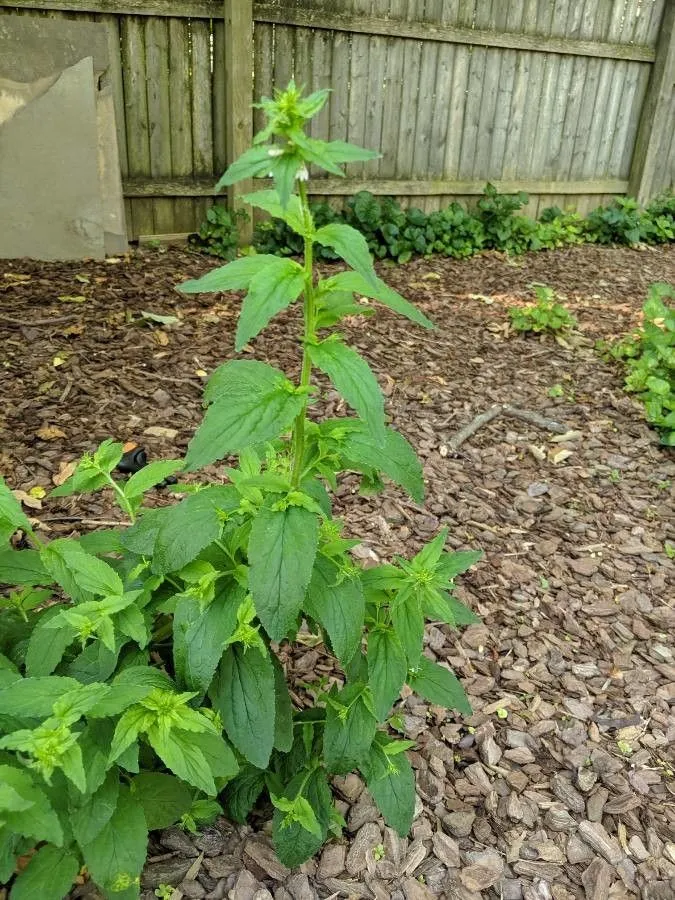
Author: L.
Bibliography: Sp. Pl.: 931 (1753)
Year: 1753
Status: accepted
Rank: species
Genus: Lobelia
Vegetable: False
Observations: E. Canada to NC. & E. U.S.A.
Indian-tobacco, scientifically known as Lobelia inflata, is an intriguing species belonging to the Campanulaceae family. Originally described in the seminal work “Species Plantarum” in 1753 by the renowned botanist Carl Linnaeus, this plant has captivated the interest of botanists and herbalists alike for centuries.
This annual or biennial herb thrives in regions extending from Eastern Canada down through North Carolina and spanning much of the Eastern United States. Its natural habitat comprises open woods, fields, and disturbed areas where it can often be found growing abundantly.
Indian-tobacco is easily recognizable by its modest height, typically ranging from 15 to 100 centimeters. The plant features sharply toothed, alternate leaves that bear a slight hair-like texture. Flowering from midsummer to early fall, Lobelia inflata produces small, light blue to pale violet tubular flowers, each stretching around 1.5 cm in length. These delicate blossoms are characteristic of the Lobelia genus, distinguished by their two-lipped structure and prominent lower lip.
The plant’s seed pods, which are notably inflated and abundant, are a key identifying feature—hence the name ‘inflata.’ These capsules contain numerous tiny seeds that disperse readily, facilitating the plant’s widespread occurrence across its native range.
Indian-tobacco holds a place of importance in traditional herbal medicine. In the past, indigenous peoples and early settlers in North America utilized the plant for various medicinal purposes. Despite its historical usage, modern medical and botanical research advises caution, as certain compounds in Lobelia inflata can be toxic if misused.
In gardening and ecological contexts, Indian-tobacco can be a beneficial addition to wildflower mixes aimed at supporting native pollinators. Its nectar-rich flowers attract a variety of insects, including bees and butterflies, thereby contributing to the local biodiversity.
Understanding and appreciating Lobelia inflata in its environmental and botanical context enriches our knowledge of native flora and their roles in natural ecosystems. While its common name alludes to its historical use as a tobacco substitute, it’s crucial to recognize both the cultural significance and potential risks associated with this fascinating plant.
Deu: aufgeblasene lobelie, indianer-tabak, lobelie, indianischer tabak
Eng: indian-tobacco, indian tobacco, inflated tobacco, wild tobacco
Spa: hierba del asma, tabaco indio
Por: lobélia, tabaco-indiano
Fra: lobélie enflée, tabac indien, lobélie gonflée
Swe: läkelobelia
Nld: blaaslobelia
Nno: legelobelia
Nob: legelobelia
En: Indian-tobacco, INDIAN TOBACCO, Inflated tobacco, Wild tobacco
Az: Şişman firəngotu
Ca: Tabac indi
Cs: Lobelka nadmutá
Nl: Blaaslobelia
Fi: Rohtolobelia
Fr: Tabac indien, Lobélie enflée, Lobélie gonflée
De: Indianer-Tabak, Lobelie, Indianischer Tabak, Indianertabak, Aufgeblasene Lobelie
Ko: 로벨리아 인플라타
Nb: Legelobelia
Nn: Legelobelia
Pt: Tabaco-indiano, Lobélia
Sk: Lobelka nadutá
Es: Hierba del asma, Tabaco indio
Sv: Läkelobelia
Taken Jul 4, 2019 by Sophia Sophia (cc-by-sa)
Taken Aug 18, 2021 by Matthew Dyer (cc-by-sa)
Taken Jul 10, 2021 by sandy pardes (cc-by-sa)
Taken Nov 13, 2021 by Nicole Barnett 79 Barnett (cc-by-sa)
Taken Oct 30, 2021 by Chris P (cc-by-sa)
Taken Aug 1, 2021 by brettw (cc-by-sa)
Taken Oct 30, 2021 by Chris P (cc-by-sa)
Taken Dec 16, 2020 by Antunes Flávia (cc-by-sa)
Taken Dec 16, 2020 by Antunes Flávia (cc-by-sa)
Taken Sep 17, 2022 by dusan curuvija (cc-by-sa)
Taken Jan 1, 1900 by EOL − Justice, W.S. (cc-by-nc-sa)
Taken Aug 26, 2014 by EOL − Sam Kieschnick (cc-by-nc)
Taken Jan 1, 1900 by EOL − Cooper, G.A. (cc-by-nc-sa)
Taken Jul 31, 2013 by EOL − athryn (cc-by-nc)
Taken Jun 28, 2019 by Terrilynn Platt (cc-by-sa)
Taken Sep 1, 2021 by Ethan Cass (cc-by-sa)
Taken Aug 24, 2004 by EOL − Steven J. Baskauf (cc-by-nc-sa)
Taken Jul 5, 2009 by EOL − Ron Thomas (cc-by-nc-sa)
Taken Jul 5, 2009 by EOL − Ron Thomas (cc-by-nc-sa)
Taken Aug 8, 2015 by EOL − yasingi (cc-by-nc)
Taken Aug 11, 2014 by EOL − randyhaar (cc-by-nc)
Taken Sep 6, 2021 by Kymberly Strong (cc-by-sa)
Taken Jul 26, 2017 by kristina jaques (cc-by-sa)
Taken Oct 20, 2019 by morgan morgan hancock (cc-by-sa)
Taken Sep 3, 2021 by marissa fontaine (cc-by-sa)
Taken Jul 12, 2021 by Lisa Johnson (cc-by-sa)
Taken Sep 1, 2021 by Ethan Cass (cc-by-sa)
© copyright of the Board of Trustees of the Royal Botanic Gardens, Kew.
Growth habit: Forb/herb
Family: Myrtaceae Author: (F.Muell.) K.D.Hill & L.A.S.Johnson Bibliography: Telopea 6: 402 (1995) Year: 1995 Status:…
Family: Rubiaceae Author: Pierre ex A.Froehner Bibliography: Notizbl. Bot. Gart. Berlin-Dahlem 1: 237 (1897) Year:…
Family: Sapindaceae Author: Koidz. Bibliography: J. Coll. Sci. Imp. Univ. Tokyo 32(1): 38 (1911) Year:…
Family: Asteraceae Author: A.Gray Bibliography: Pacif. Railr. Rep.: 107 (1857) Year: 1857 Status: accepted Rank:…
Family: Fabaceae Author: Medik. Bibliography: Vorles. Churpfälz. Phys.-Ökon. Ges. 2: 398 (1787) Year: 1787 Status:…
Family: Aspleniaceae Author: (Cav.) Alston Bibliography: Bull. Misc. Inform. Kew 1932: 309 (1932) Year: 1932…